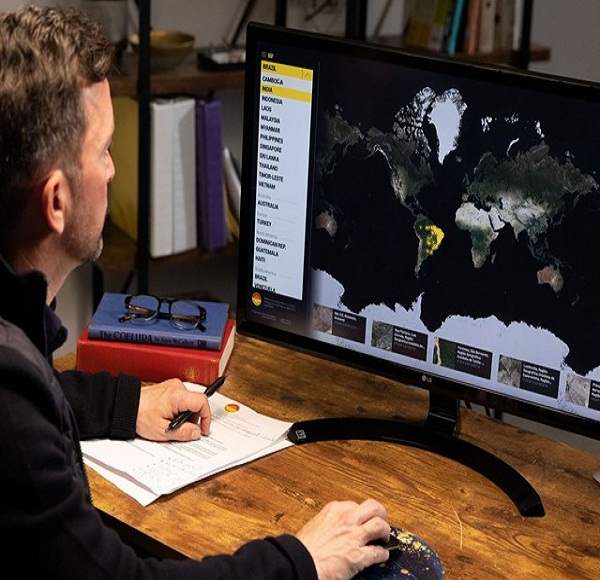A new digital platform can map the world’s plastic waste using a combination of satellite imagery and artificial intelligence (AI).
The data gathered is believed to be a world first, providing a historic insight into one of the planet’s most complex environmental challenges – how to stop plastic from flowing into our oceans.
“It’s not about naming and shaming,” but “empowering governments” with information to help tackle the problem, said Fabien Laurier, a key architect of GPW.
The free, publicly available tool was developed and funded by Australian non-profit the Minderoo Foundation, and has been “applauded” by the United Nations.

A plastic waste site in Indonesia leads towards the water. Pic: Maxar Technologies/Earthrise Media
“It is difficult to control what you cannot measure or even locate,” said Kakuko Nagatani-Yoshida from the United Nations Environment Programme. She hopes governments will use the “innovative” technology to reduce “open-dumping and burning of waste”.
The mapping system uses remote satellite imagery from the European Space Agency (ESA) and AI to determine the size and scale of plastic waste sites. A similar process has been used to map deforestation in recent years, but this will be the first time it has been used for plastics.
“Identifying the waste sites in the satellite imagery is totally novel and something that is very hard to do at all, [even] on a small scale,” said Caleb Kruse, GPW’s lead data scientist.
Kruse’s team taught AI to comb satellite imagery from the ESA for “give-away” features of plastic sites. These include an entry road for heavy vehicles and grey-brown textured areas showing mounds of waste.

The team look for typical characteristics to identify plastic waste sites. The houses provide a sense of scale. Pic: Maxar Technologies/Earthrise Media
The countries mapped so far include all of south-east Asia and Australia and countries identified in research published in Science Advances as accounting for high rates of plastic emissions in the ocean.
The sheer number of previously undocumented plastic piles and their proximity to waterways was surprising, said Laurier.
One in five of the mapped waste sites was within less than 250m of waterways that send plastic straight into rivers – and ultimately the ocean.
“We know that land-based leakage contributes up to 91 per cent of the plastic waste that enters the ocean,” Laurier explained, adding that the number of sites discovered by the mapping was much higher than expected.
The high-resolution mapping aims to help authorities identify this leakage and use real data to inform policies that would prevent it.

In Indonesia, the government is already working with the Minderoo Foundation to map and manage its waste problem. The country is the world’s fifth-highest contributor to ocean plastics.
“GPW is very helpful for identifying undocumented or illegal waste dump sites in Indonesia,” said Dr Nani Hendiarti, deputy for environment and forestry management coordination, at the Indonesian coordinating Ministry for Maritime Affairs and Investment.
Hendiarti added the tool has enabled the government prioritise areas in need of better waste management policies and actions.

GPW has located hundreds of undocumented and illegal sites all over Indonesia, marked here in clusters
Source: E&T










